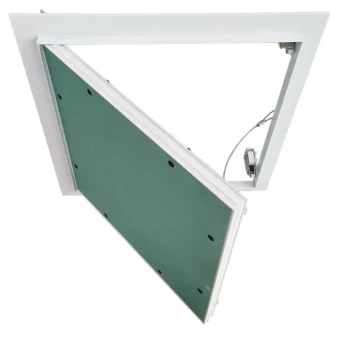- Afrikaans
- Albanian
- Amharic
- Arabic
- Armenian
- Azerbaijani
- Basque
- Belarusian
- Bengali
- Bosnian
- Bulgarian
- Catalan
- Cebuano
- Corsican
- Croatian
- Czech
- Danish
- Dutch
- English
- Esperanto
- Estonian
- French
- German
- Greek
- Hindi
- Indonesian
- irish
- Italian
- Japanese
- Korean
- Lao
- Malay
- Myanmar
- Norwegian
- Norwegian
- Polish
- Portuguese
- Romanian
- Russian
- Serbian
- Spanish
- Swedish
- Thai
- Turkish
- Ukrainian
- Uzbek
- Vietnamese
Nov . 16, 2024 11:01 Back to list
suspended ceiling access hatch
Suspended Ceiling Access Hatches An Essential Component for Modern Spaces
In the world of modern architectural design, functionality and aesthetics go hand in hand. One often-overlooked component that plays a crucial role in maintaining both the appearance and practicality of a building is the suspended ceiling access hatch. These hatches provide essential access to the spaces above the ceiling, enabling easy maintenance and inspection of electrical, plumbing, and HVAC systems without compromising the visual integrity of the interior.
Understanding Suspended Ceilings
Suspended ceilings, also known as drop ceilings, are widely used in commercial and residential buildings for a variety of reasons. They provide sound insulation, improve aesthetics by concealing wiring and ductwork, and allow for easy installation of lighting fixtures. However, one of the challenges associated with suspended ceilings is ensuring that maintenance crews can access the infrastructure concealed above them. This is where access hatches come into play.
What is a Suspended Ceiling Access Hatch?
A suspended ceiling access hatch is a panel that can be easily opened to provide entry to the ceiling void. These hatches are designed to blend seamlessly into the ceiling grid, ensuring that they do not distract from the overall design of the space. They are available in various sizes, materials, and finishes to match different ceiling types and architectural aesthetics.
Importance of Access Hatches
1. Ease of Maintenance One of the primary functions of access hatches is to facilitate maintenance of the systems that run above the ceiling. Whether it’s checking the air conditioning units, inspecting electrical wiring, or resolving plumbing issues, having a designated access point saves time and reduces the need for extensive dismantling of the ceiling.
2. Cost-Effective Solution By allowing for straightforward access to critical systems, suspended ceiling access hatches can ultimately save building owners money. Regular maintenance helps prevent larger issues that can lead to expensive repairs. The easy access provided by these hatches ensures that technicians can quickly identify and resolve problems before they escalate.
suspended ceiling access hatch

3. Aesthetic Integration Access hatches are designed to be as inconspicuous as possible, ensuring that they do not disrupt the visual flow of a room. Many models can be painted to match the surrounding ceiling or feature a flush design that blends seamlessly with the grid system. This allows architects and designers to maintain a clean and modern look while providing necessary functionality.
4. Compliance with Regulations Many building codes and regulations require that certain access points be in place for safety inspections. Installing suspended ceiling access hatches can ensure compliance with these regulations, thus enhancing the overall safety of the building.
Choosing the Right Access Hatch
When selecting a suspended ceiling access hatch, several factors should be considered
- Size and Location The size of the hatch should be appropriate for the equipment or systems that need to be accessed. Careful planning of the hatch's location is also crucial, as it should provide direct access to relevant fixtures.
- Material Access hatches come in various materials, from lightweight plastic to robust metal options. The choice should align with the overall ceiling design and structural needs.
- Security Features Depending on the nature of the space, it may be necessary to choose hatches with locking mechanisms for added security against unauthorized access.
In conclusion, suspended ceiling access hatches are an essential yet often underestimated feature in modern buildings. They provide the necessary access for maintenance and inspection while keeping the aesthetics of the ceiling intact. By investing in the right access hatch, building owners can ensure longevity and safety in their buildings, demonstrating that even the smallest details play a significant role in architecture and design.
-
Transform Interiors with PVC Gypsum Ceiling: A Stylish, Durable, and Moisture-Resistant SolutionNewsMay.19,2025
-
The Smart Interior Upgrade: Discover the Durability and Versatility of Gypsum Ceiling Access Panel SolutionsNewsMay.19,2025
-
The Smart Choice for Interior Design: Discover the Value of PVC Gypsum Ceiling SolutionsNewsMay.19,2025
-
Mineral Fiber Ceiling Tiles: The Smart Blend of Performance and AestheticsNewsMay.19,2025
-
Mineral Fiber Ceiling Tiles: The Superior Choice Over Gypsum for Sound and Fire SafetyNewsMay.19,2025
-
Mineral Fiber Ceiling Tiles: Eco-Friendly Strength and Style for Every CeilingNewsMay.19,2025







